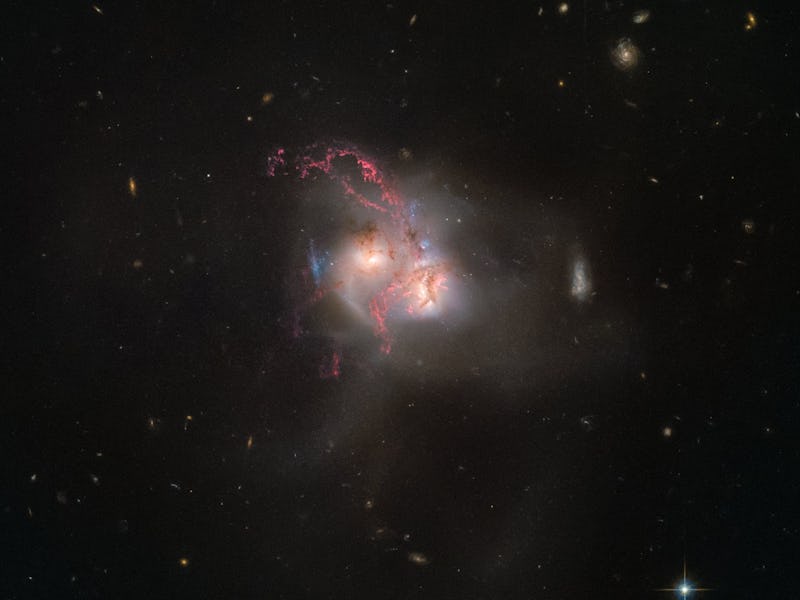New Hubble Picture Captures the "Dawn of a Galactic Collision"
It’s an interstellar mosh pit.

No, that’s not a picture of the Death Star exploding. It’s actually an image of two galaxies doing the cosmic tango.
The intermingling galaxies in the photo above — and reproduced below — have fused into one gargantuan intergalactic object named NGC 5256, or Markarian 266. Two disc galaxies came together to create this stunning light show and the Hubble Space Telescope, which is basically a high-res camera floating through space, was able to capture this process and beam the picture to NASA and the European Space Agency. Not too shabby.
This majestic interstellar formation is roughly 350 million light-years away from Earth in the constellation Ursa Major. The centers of these two tussling galaxies are only 13,000 light-years apart (pretty close for space standards!) causing plumes of space dust and giant puffs of gas to emanate out into the darkness.
An ongoing cosmic collision.
In addition to all of the debris this two galaxies are sputtering, each of their nuclei — or compact region at the center of the galaxies — are intensely glowing. This is because they’re bing superheated by shock waves created by colliding gas clouds. The result are those two light bulb-looking circles on both sides of NGC 5256.
Galaxy mergers were probably pretty common in the early universe, when everything seemed pretty chaotic. Most galaxies show signs of their past mergers, even our own. It turns out the Milky Way has actually cannibalized a few lesser galaxies in the past and is in the process of absorbing one right now. The Sagittarius Dwarf Spheroidal Galaxy is currently being swallowed up by our home galaxy and scientists predict that the Milky Way will move towards its next victim, the Andromeda Galaxy, in about two billion years.
Looks like the Milky Way has a lot in common with its neighbors — extremely beautiful and mildly terrifying.